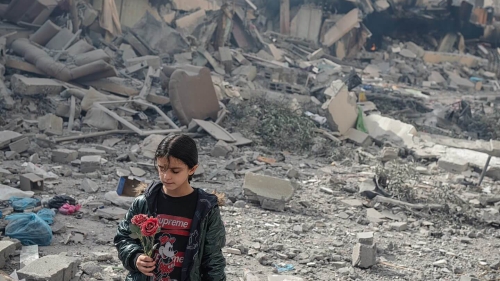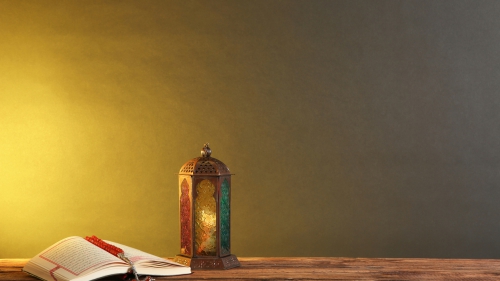Figure Drawing and Islamic Aesthetics

The fundamental nature of beauty and the beautiful in Islam appears, technically, not to be completely in opposition to the moderate and qualified representation of humans, given that humans are also Allah's beautiful creation abounding with signs that clearly point to Him, just like everything else: "On the earth are Signs for those of assured Faith; as also in your own selves: will ye not then see?" (51:20-21).
"It is Allah Who has made for you the earth as a resting place, and the sky as a canopy, and has given you shape - and made your shapes beautiful -, and has provided for you Sustenance..." (40:64)
According to a set of fatwas (formal legal opinions), there is nothing wrong in drawing human beings in a restrained and qualified way, as long as such images do not depict nudity and other indecent representations abhorrent to the Islamic tawhidic worldview such as the idealization of infidelity, individualism, self-realization and man's animal passions, and are not used for veneration or glorification of the images' substance by either the artist or the beholder, and do not fall short of promoting moderation and uprightness rather than extravagance, conceit, haughtiness and the squandering of one's time, resources and energy. What is unconditionally wrong and thus strongly prohibited is making and keeping statues, i.e., complete, solid figures which have not been disfigured or otherwise defaced. Their presence in a house is sufficient to drive away the angels, as the Prophet (pbuh) unequivocally stated on numerous occasions. As a matter of fact, the aforementioned criterion pertaining to two-dimensional drawings is universal in Islamic arts and presides over not only representations of humans but also over all other more readily permitted kinds of painting.
Nonetheless, even though drawing humans on a limited scale and in qualified environments appears not to be totally against the framework of Islamic values and principles, on condition that the rigorous standards were always duly adhered to, yet the Muslim aesthetic conscience was experiencing great difficulties throughout while trying to accept the acts relating to painting humans and transforming the same to fit the delicate Islamic aesthetic demands. While some liberals permitted the use of human depictions in secular works of art, more conservative groups or individuals were of the opinion that such should be condemned outright even in those. That is the reason why figural painting was and remained a rare, private, secular, and for some even forbidden enterprise in every age of the Islamic presence. In the early exemplary days of Islam, it was totally disregarded even in private and secular domains; it started coming to light after the third generation of the Muslims. Even then, however, figural painting was limited to a few geographical areas and to a few strictly private and secular human pursuits, seen as a strong influence from certain pre-Islamic artistic cultures. Yet, it never became universally accepted and practiced, as a result of which figural painting failed in establishing itself as an integral part of the Muslim civilizational and cultural contribution.1
It ought to be pointed out clearly here that seldom were the goals of those whose attention was engaged by the subject of figural painting any different from those who indulged themselves with the other aspects of Islamic fine arts. Most of the time, their objective was identical, that is, creating a piece of art capable of drawing the viewer's attention away from the naturalistic form of the represented object to an intuition of the other-than-nature qualities of Divinity. Consequently, figurative objects, not only human but also animal, were as a rule denaturalized, heavily stylized and abstracted from their naturalistic forms. In such an unprecedented artistic expression of human beings, persons represented were bound to appear without their individual characters, without real relation between them, without their psychological involvement with each other, emotionless, indifferent, etc. The subject of depth and perspective in paintings was also greatly affected for the same reason.2
Nonetheless, regardless of how much subjected to stylization and denaturalization, drawing human beings, by and large, failed to appeal to the mainstream of Islamic arts. In addition to what we have already stated, such was the case also because man, with the sole exception of prophets, is a being prone to sinning and defiling his innocent and pure soul-- sometimes more and sometimes less. Therefore, the refined Islamic aesthetic preference always considered man as objectionable, at most, or least fitting, at least, an object to be employed as a vehicle for presenting an aesthetic expression of tawhid and of that Supreme Beauty associated only with God and His revealed will or words. Despite an artist's right goal and the rightly selected themes, plus an artist's enormous talent and skill, the mere appearance of humans would always call to mind the dark side of man and his ominous impression on creation, thus getting seriously in the way of the penetration of the avid spectator's attention to the sublime purpose of Islamic art. Indeed, the more poorly executed a work of art-- if it abounds in ingredients and themes underscoring naturalistic qualities, for example--the wider and hardly bridgeable gap between the spectator and the purpose of Islamic art materializes. On seeing a human figure used for decoration and ornamentation--especially if the naturalism of the same figure has been buttressed one way or another-- the spontaneous reaction of a righteous seeker of inspirational flashes in arts is bound to be reminiscent of the spontaneous reaction of the angels after they had been told of man's vicegerency assignment on earth: "...Wilt Thou place therein one who will make mischief therein and shed blood?... (2:30)
This would be the case if a person represented on an ornament or drawing is anonymous. But if he is known to a beholder and if there is a certain emotional and psychological thread connecting the two, then the case becomes all the more serious and so more repugnant to a person saturated with a tawhidic mentality. As a result of such a relationship, a beholder under some fertile conditions can easily, little by little, develop a degree of fear, melancholy, love, admiration, veneration, etc., with regard to a person (or persons) represented and his surviving or commemorated legacy.
=======
Notes:
1. Lois Lamya al-Faruqi, Islam and Art, (Islamabad: National Hijra Council, 1985), p. 98.
2. Ibid., p. 109-111.
*This article is an excerpt from the author's book "The Philosophy of Decoration in Islamic Architecture"
*****
Dr. Spahic Omer, a Bosnian currently residing in Malaysia, is an Associate Professor at the Kulliyyah of Architecture and Environmental Design, International Islamic University Malaysia. He studied in Bosnia, Egypt and Malaysia. His research interests cover Islamic history, culture and civilization, as well as the history and philosophy of the Islamic built environment. He can be reached at spahicoyahoo.com; his blog is at www.medinanet.org.
Related Suggestions
I agree that clarification is needed whenever quoting a Fatwa the source
must be displayed. Even more so when quoting from the Quran and
Ahadith. Furthermore we as Muslims have to be very wary of imitating the
Jews and Christians when they copy, paste verses from their scriptures to
prove their points. A lot of new Muslims read these articles and if not
authentic in it's source and intention then we are going to be held
accountable for misleading them.

















